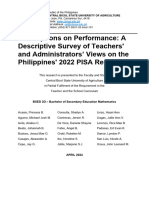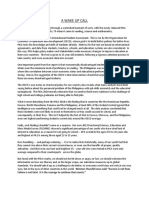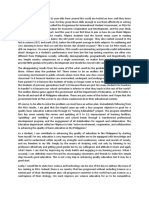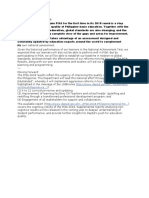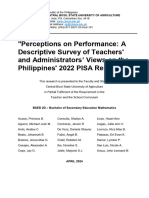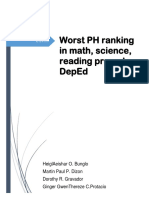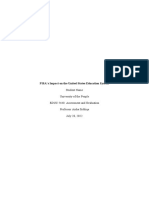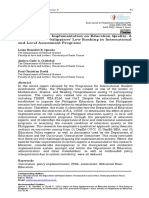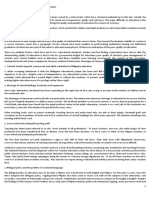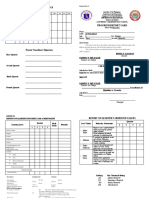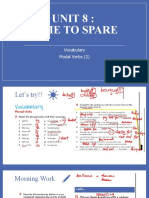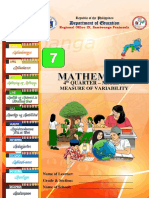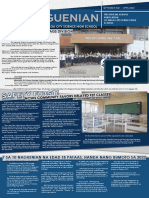1
Written Assignment Unit 6
University of the People
EDUC 5440- Assessment and Evaluation
Dr. Ismail Yuksel
December 4, 2024
� 2
Analysis of PISA Results and Their Impacts on the Philippines
The Organization for Economic Co-operation and Development (OECD) administers the
Programme for International Student Assessment (PISA), which evaluates students' reading,
math, and science skills at the age of 15. An important step in evaluating the Philippines'
educational system internationally was the country's participation in the 2018 PISA. However,
the findings also highlighted urgent issues and need for improvement in the Philippine
educational system.
Positive Impacts of PISA Results on the Philippines
1. Identification of Systemic Problems and Data-Driven Solutions the Philippines scored lower
than the global average in reading, math, and science in the 2018 PISA results, placing the
country last in the rankings. These findings serve as a wake-up call for those involved in
education, while also identifying possibilities for improvement. This data-driven approach
encourages the government to use evidence-based policies to close learning gaps. According to
the Department of Education (DepEd), the results prompted the launching of Sulong
EduKalidad, a program aimed at improving teacher quality, curriculum development, learning
environments, and assessment tools (DepEd, 2019).
2. International benchmarking allows the Philippines to compare its educational system to that of
other countries by participating in PISA. This comparison reveals best practices that can be
tailored to the local environment. Countries that consistently score high on PISA, such as
Singapore and Finland, place a heavy emphasis on early childhood education, teacher
� 3
preparation, and equitable resource distribution—areas that the Philippines may prioritize in
educational reform.
3. Policy Advocacy and Increased Funding as a result of the PISA results, which sparked
discussions about education among policymakers, educators, and the general public, the
government has pledged to increase funding for public education, with a focus on teacher
training and instructional materials, particularly in underserved areas. According to the Asian
Development Bank (2021), these conversations underline the importance of increasing education
investment.
Negative Impacts of PISA Results on the Philippines
1. International Perception of Educational Quality the Philippines' poor PISA scores could harm
the country's reputation for high-quality education abroad. The nation's ability to compete for
foreign investments may be hampered by this unfavorable perception, especially in sectors that
demand highly skilled workers. Employers may perceive Filipino graduates as less competent
compared to their counterparts from higher-ranking countries.
2. Psychological Effect on Students and Teachers: Students' and teachers' morale may
unintentionally suffer when PISA results are released. Their motivation may be impacted by
feelings of discouragement and inadequacy brought on by being classified as one of the lowest
performers. Such views can produce self-fulfilling prophecies, where low expectations result in
less effort and less success, according to educational psychology research (Dweck, 2006).
� 4
3. The risk of overemphasizing standardized testing as the only indicator of academic
achievement exists, even while PISA offers useful data. By concentrating just on test-related
material, teachers may engage in "teaching to the test," ignoring other facets of holistic education
including creativity, critical thinking, and socioemotional growth. Zhao's (2018) research
cautions against putting test scores ahead of developing well-rounded students.
4. Existing disparities in the Philippine educational system are also highlighted by the PISA
results. Rural and low-income schools typically perform worse than their urban counterparts,
which is a result of differences in access to technology, qualified teachers, and resources. If these
injustices are not addressed, societal inequality may worsen as the gap between rich and
underprivileged kids grows.
Conclusion
The Philippines faces both potential for significant improvements and systemic obstacles
as a result of the 2018 PISA findings. On the plus side, they have emphasized how urgent it is to
overcome educational shortcomings, encouraged policy advocacy, and offered standards for
progress. But it's also important to handle the negative effects, which can range from increased
disparities to a tarnished international reputation. The Philippines should take a balanced stance
going ahead, stressing equity and comprehensive education in addition to academic success. By
doing this, the nation can improve its educational system and give its young people a better
future.
� 5
References:
Asian Development Bank. (2021). Improving the quality of basic education in the Philippines.
Retrieved from https://www.adb.org
Department of Education (DepEd). (2019). DepEd launches Sulong EduKalidad to address
challenges in basic education. Retrieved from https://www.deped.gov.ph
Dweck, C. (2006). Mindset: The new psychology of success. Random House.
Zhao, Y. (2018). What works may hurt: Side effects in education. Teachers College Press.

